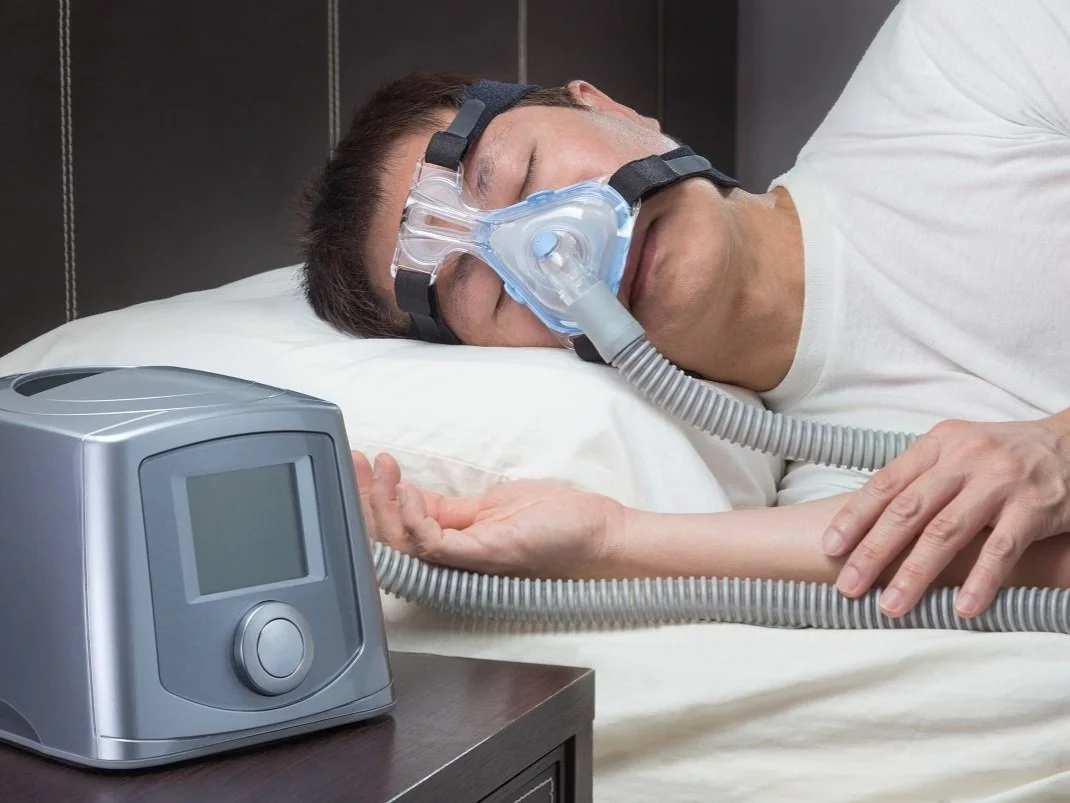What is Airway Orthodontics?
Our focus is on the comprehensive health of our patients, with special consideration given to situations where a child's smile appears crowded or misaligned, signaling potential issues with jaw development. Such conditions, often arising from specific oral habits and jaw irregularities, may contribute to Obstructive Sleep Apnea (OSA) and Sleep Disordered Breathing (SDB). Airway Orthodontics encompasses orthodontic approaches designed to expand the airway, thereby addressing OSA and SDB concerns.
Obstructive Sleep Apnea (OSA) and Sleep Disordered Breathing (SDB)
Obstructive Sleep Apnea (OSA) is a sleep disorder characterized by repeated episodes of complete or partial blockage of the upper airway during sleep. This obstruction can lead to disruptions in breathing, resulting in decreased oxygen levels in the blood and fragmented sleep patterns. Symptoms often include loud snoring, daytime sleepiness, fatigue, and morning headaches. OSA can have serious health implications if left untreated, including increased risk of cardiovascular disease, hypertension, stroke, and diabetes. Treatment typically involves lifestyle changes, such as weight loss and positional therapy, and medical interventions like continuous positive airway pressure (CPAP) therapy, orthodontic treatment or oral appliances. In severe cases, surgery may be recommended.
Symptoms of OSA and SBD
Loud or frequent snoring
Episodes of breathing cessation during sleep, witnessed by a partner or family member
Gasping or choking sensations during sleep
Excessive daytime sleepiness Fatigue
Irritability or mood changes
Difficulty concentrating or remembering
Dry mouth or sore throat upon waking
Restless sleep or frequent awakenings during the night
Night sweats Frequent need to urinate during the night (nocturia)
Depression or anxiety
High blood pressure (hypertension)
Causes of OSA and SBD
Obstructive Sleep Apnea (OSA) can have multiple underlying causes, often involving a combination of factors. Some common causes include:
Anatomical factors: Structural abnormalities in the upper airway, such as enlarged tonsils or adenoids, a deviated septum, or a narrow airway due to genetics or constricted upper jaw structure, can contribute to airway obstruction during sleep.
Excess weight: Obesity or excess body weight, particularly around the neck and throat area, can increase the risk of OSA by putting pressure on the airway and obstructing airflow.
Muscle tone: During sleep, relaxation of the muscles in the throat and tongue can lead to collapse of the airway. The lack of adequate space for the tongue, which can result from narrow jaws, recessive upper and lower jaws, or being tongue-tied, contributes to obstructive sleep apnea.
Family history: There may be a genetic predisposition to OSA, as certain anatomical features or traits that increase the risk of airway obstruction can be inherited.
How we can help
Children and teens
Our orthodontic approaches focus on growth enhancement, such as expanding and advancing the upper and/or lower jaws to accommodate the tongue and improve airway patency.
Habit correction (e.g., thumb-sucking, tongue thrust)
Gentle appliances to guide jaw and airway development
Expansion appliances for better breathing and spacing
Adults
We are among the few orthodontic providers offering Miniscrew-assisted rapid palatal expansion (MARPE) procedures. MARPE entails an orthodontic approach using devices to widen the upper jaw, or maxilla, and augment the arch perimeter of the palate without needing the full orthognathic jaw surgery. If jaw surgery is necessary, we collaborate with highly skilled surgeons to ensure optimal outcomes for addressing your OSA and SBD.
Early Airway Orthodontics
Healthy breathing starts with healthy growth.
At Marysville Orthodontics, we believe early intervention can make a lifelong difference. Our early airway-focused orthodontic care supports proper jaw development, encourages nasal breathing, and helps address underlying issues that affect sleep, speech, and facial growth — all before braces are even needed.
Children as young as 4 years old can benefit — especially those who:
Snore or mouth breathe
Have frequent allergies or congestion
Experience restless sleep or bedwetting
Have speech delays or tongue posture issues
Show signs of crowding or narrow jaws early on
Why Start So Early?
Promote nasal breathing and restful sleep
Prevent future bite and crowding issues
Encourage balanced jaw and facial development
Build a strong foundation for future orthodontics
Boost your child’s overall health and confidence







